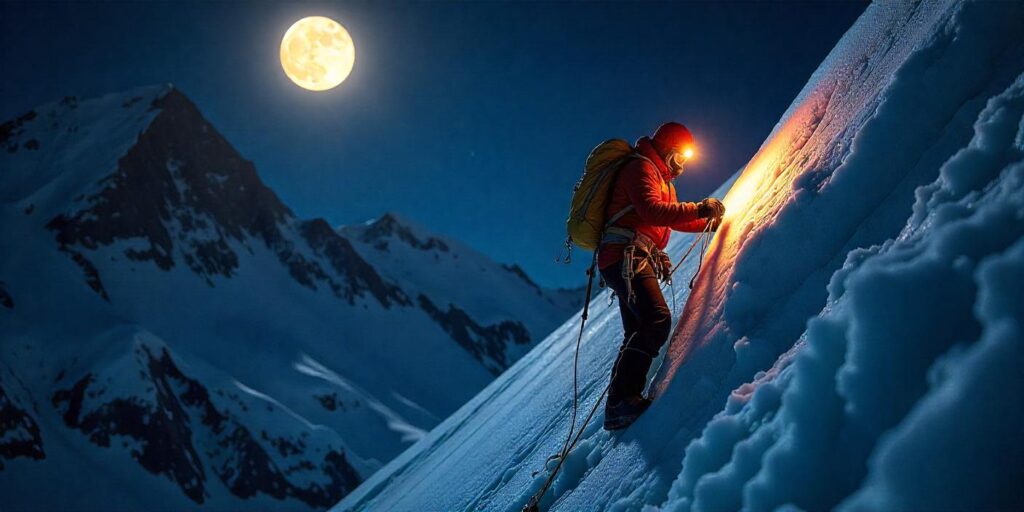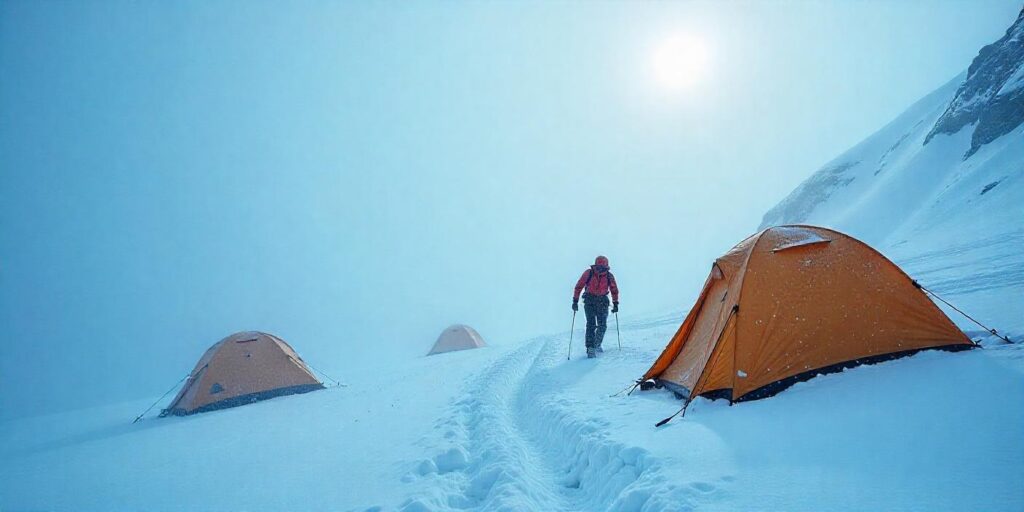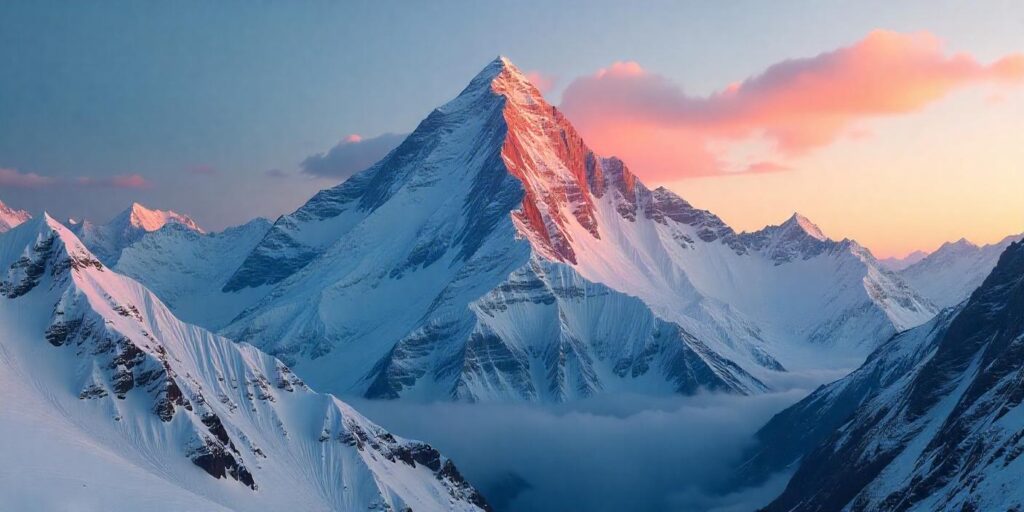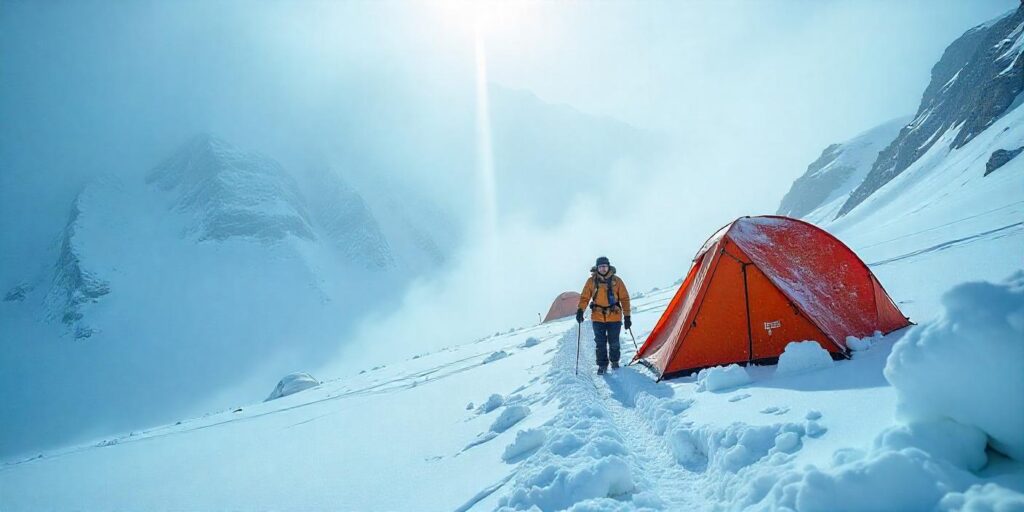Mount Everest, standing tall at 8,848.86 meters (29,031.7 feet), is renowned as the highest point on Earth. Nestled in the Himalayas along the border between Nepal and the Tibet Autonomous Region of China, Everest is a symbol of ultimate achievement for climbers and a beacon of natural grandeur. This blog delves into every aspect of Mount Everest, from its geographical significance to the challenges faced by those who attempt to summit it.

1. Mount Everest Geographical and Geological Aspects
Location and Elevation
- Location: Mount Everest is located in the Mahalangur Himal sub-range of the Himalayas, straddling the border between Nepal and the Tibet Autonomous Region of China. The peak is situated at approximately 27.9881° N latitude and 86.9250° E longitude.
- Elevation: Officially recognized as 8,848.86 meters (29,031.7 feet) above sea level, this elevation was confirmed by a 2020 joint survey by China and Nepal.
Geological Formation
- Formation: Mount Everest is part of the Himalayas, a mountain range formed by the tectonic collision between the Indian Plate and the Eurasian Plate. This collision began around 50 million years ago and continues to push the Himalayas upward.
- Rock Types: Everest’s summit is composed mainly of sedimentary rocks, including limestone, shale, and marble, which were originally laid down at the bottom of a shallow sea. Over millions of years, these rocks were thrust upwards by tectonic forces.
Topography
- Summit: The summit of Everest is a small, flat area covered by snow and ice. The highest point is marked by a small metal pyramid, known as the “Everest Summit Marker,” placed by the 1953 British expedition.
- Camps and Routes: The most common climbing routes are the South Col route from Nepal and the North Ridge route from Tibet. The South Col route involves establishing several camps along the way, including Base Camp, Camp I, Camp II, Camp III, and the South Col.
2. Mount Everest Climbing History and Expeditions

Early Expeditions
- First Attempts: The first serious attempt to climb Everest was made in 1921 by a British expedition led by Charles Howard-Bury. They reached the North Col but did not summit.
- First Summit: On May 29, 1953, Sir Edmund Hillary of New Zealand and Tenzing Norgay, a Sherpa of Nepal, successfully reached the summit via the South Col route. Their achievement is celebrated as one of the greatest feats in mountaineering history.
Notable Climbers and Expeditions
- Reinhold Messner: In 1978, Italian mountaineer Reinhold Messner, along with Peter Habeler, became the first climber to reach the summit without supplemental oxygen. This groundbreaking achievement demonstrated the extreme endurance required for Everest’s summit.
- Everest Tragedies: The mountain has also witnessed numerous tragedies, including the infamous 1996 disaster where eight climbers perished due to a severe storm. Jon Krakauer’s book “Into Thin Air” details this disaster and its impact on the climbing community.
Modern Expeditions
- Commercial Expeditions: Since the 1990s, Mount Everest has seen a surge in commercial expeditions, with many climbers paying substantial fees to guide services. While this has democratized access to the summit, it has also led to increased traffic, overcrowding, and environmental concerns.
- Notable Climbers: Modern climbers like Kami Rita Sherpa, who holds the record for the most summits, and climbers like Jordan Romero, who became the youngest person to summit Everest at age 13, have continued to push the boundaries of Everest climbing.
3. Mount Everest Climbing Routes and Techniques
South Col Route
- Base Camp: The trek to Everest Base Camp (EBC) is the first stage of the climb from Nepal. EBC is situated at an altitude of 5,364 meters (17,598 feet) and serves as the staging area for climbers.
- Camp I to Camp IV: The ascent from Base Camp to Camp IV involves traversing the Khumbu Icefall, a treacherous ice formation with shifting crevasses and seracs. Camp II is located at 6,400 meters (21,000 feet), Camp III at 7,200 meters (23,600 feet), and Camp IV at 7,900 meters (25,900 feet), situated at the South Col.
- Summit Push: From Camp IV, climbers make a final push to the summit, often utilizing supplemental oxygen due to the extreme altitude. The climb involves traversing the South Summit, the Hillary Step, and finally reaching the peak.

North Ridge Route
- Tibetan Approach: The North Ridge route starts from Tibet and involves a long trek from the base of the mountain at the Tibetan Plateau. The approach is less frequented than the South Col route.
- North Col to Summit: The ascent involves establishing camps and navigating the North Col, the north face, and the final summit ridge. The climb is challenging due to the extreme altitude and harsh weather conditions.
Technical Aspects
- Supplemental Oxygen: Most climbers use supplemental oxygen due to the thin air at high altitudes. However, this adds complexity to the climb and increases the risk of complications.
- Weather Conditions: Everest’s weather is notoriously unpredictable, with high winds, severe cold, and frequent storms. Climbers must carefully time their ascent to avoid dangerous conditions.
4. Environmental and Ecological Concerns
Glacial and Ice Melt
- Climate Change Impact: The effects of climate change are evident on Everest, with glaciers and ice fields retreating due to rising temperatures. This has implications for the stability of climbing routes and the overall environment.
- Meltwater: Increased meltwater from glaciers and ice fields can contribute to the formation of dangerous crevasses and avalanches.
Waste Management
- Human Waste: The influx of climbers has led to significant waste issues, including human waste, which poses environmental and health risks. Efforts have been made to improve waste management, including the use of “poop bags” and clean-up expeditions.
- Trash: The accumulation of trash, including discarded equipment and packaging, is a growing concern. Various initiatives aim to clean up Everest and mitigate its impact on the environment.
5. Mount Everest Cultural and Economic Impact
Sherpa Community
- Role of Sherpas: The Sherpa people, an ethnic group native to the Himalayas, play a crucial role in Everest expeditions as guides and support staff. Their knowledge of the mountain and climbing skills are essential for the success and safety of expeditions.
- Cultural Heritage: The Sherpas have their own rich cultural traditions and practices, which are intertwined with the climbing culture on Everest. Their contributions are vital to the success of many climbs.

Economic Impact
- Tourism Revenue: Mount Everest is a major draw for tourism, generating significant revenue for Nepal and Tibet. The economic benefits include income from climbing permits, tourism, and local businesses.
- Challenges of Overcrowding: The commercial nature of Everest climbing has led to overcrowding, which poses risks to climbers and affects the experience of the ascent. Managing the balance between economic benefits and safety remains a challenge.
6. Safety and Risks
Altitude Sickness
- Acute Mountain Sickness (AMS): Symptoms of AMS include headaches, nausea, and dizziness. It is a common risk for climbers ascending to high altitudes and can progress to more severe conditions if not managed.
- High Altitude Pulmonary Edema (HAPE) and High Altitude Cerebral Edema (HACE): These are life-threatening conditions that can occur due to extreme altitude and require immediate medical attention.
Avalanches and Crevasses
- Avalanche Risk: The risk of avalanches is significant on Everest, particularly in the Khumbu Icefall and the upper slopes. Climbers must be vigilant and follow safety protocols to minimize the risk.
- Crevasses: Hidden crevasses in the glacier and snowfields pose a major hazard. Proper training and equipment are essential for navigating these treacherous areas.
Weather Conditions
- Storms and Winds: Severe weather, including high winds and storms, can create hazardous conditions. Climbers must be prepared for sudden changes and have contingency plans in place.
7. Scientific Research and Exploration
Geological Studies
- Tectonic Activity: Scientists study Everest to understand tectonic activity and the processes that shape mountain ranges. Research helps in understanding the dynamics of plate tectonics and mountain formation.
- Glaciology: Glaciologists study Everest’s glaciers to gain insights into climate change and its impact on ice formations.
Climate Research
- Climate Monitoring: Mount Everest serves as a natural laboratory for studying high-altitude climate patterns and the effects of climate change on glaciers and ecosystems.
- Atmospheric Studies: Research on Everest contributes to our understanding of atmospheric conditions, including air quality, temperature variations, and weather patterns.
Conclusion
Mount Everest stands as a symbol of human ambition and natural beauty, drawing climbers and adventurers from around the world to its towering summit. Its extreme altitude, challenging conditions, and the incredible feats of those who attempt to reach its peak underscore its status as the highest point on Earth. While Everest continues to inspire awe and wonder, it also presents significant challenges and responsibilities. Ensuring the safety of climbers, protecting the environment, and respecting the cultures of those who live in its shadow are
The number of climbers who summit Mount Everest each year varies significantly depending on a range of factors, including weather conditions, geopolitical situations, and climbing season regulations. Here’s a detailed look at the trends and statistics related to Everest climbs over recent years:
Historical and Recent Climbing Statistics
1. Early Expeditions
- Pre-2000s: Before the year 2000, the number of successful summits each year was relatively low, with only a handful of climbers reaching the summit annually. The ascent was challenging and costly, limiting the number of climbers.
2. 2000s Trends
- 2000-2010: The early 2000s saw an increase in climbers, thanks in part to improved technology, better weather forecasting, and the growing popularity of commercial expeditions. During this period, the number of climbers generally ranged from 300 to 500 per year.
3. 2010s Trends
- 2010-2019: The number of climbers reaching the summit continued to rise. In the mid-2010s, the number of summits each year often exceeded 600. Peak years in this period included:
- 2012: Approximately 674 climbers reached the summit.
- 2015: The number of climbers was affected by the devastating earthquake in Nepal, which led to a significant drop in the number of summits that year. Only about 290 climbers reached the summit, and many expeditions were canceled.
- 2018: A record 809 climbers reached the summit.
4. Recent Statistics
- 2019: Approximately 885 climbers summited Mount Everest, making it one of the busiest years on record. This high number contributed to significant overcrowding issues and a tragic loss of life.
- 2020: The climbing season was severely impacted by the COVID-19 pandemic, leading to a very low number of summits. The season was essentially canceled, with only a handful of climbers attempting the ascent.
- 2021: The climbing season saw a resurgence with around 600 successful summits. However, the season was marred by overcrowding and several fatalities.
- 2022: The number of summits increased again, with around 700 climbers reaching the peak. The season was marked by both record successes and significant challenges, including a high number of climbers experiencing severe altitude sickness and exhaustion.
5. 2023 Statistics
- 2023: Data for 2023 indicates that approximately 800 climbers reached the summit of Everest. The year saw a relatively high number of successful summits, continuing the trend of increased traffic on the mountain.
Factors Influencing the Number of Climbers

1. Weather Conditions
- Climbing Windows: Successful summits are highly dependent on weather windows. The brief climbing season in late May, when weather conditions are relatively stable, often dictates the number of climbers who reach the summit. Favorable weather can lead to more climbers attempting the ascent.
2. Permits and Regulations
- Permit System: The number of climbers is regulated by the issuance of permits. Nepal and China (Tibet) issue permits for climbing Everest, and the number of permits can limit the number of climbers. In recent years, there have been discussions about managing the number of permits to address overcrowding issues.
3. Commercial Expeditions
- Commercialization: The rise of commercial expeditions has significantly increased the number of climbers. Companies offering guided climbs have made Everest more accessible, but also contribute to congestion and safety concerns.
4. Environmental and Safety Concerns
- Overcrowding: Increased traffic has led to overcrowding on the mountain, particularly during the short window of favorable weather. This congestion can create dangerous conditions and impact the safety of climbers.
- Environmental Impact: The large number of climbers has also raised concerns about the environmental impact on Everest, including waste management and damage to the fragile ecosystem.
Conclusion
The number of climbers reaching the summit of Mount Everest each year has fluctuated based on various factors, including weather, regulations, and global events. While the early years saw relatively few climbers, the trend has shifted towards increased traffic, with hundreds of climbers attempting the ascent each year. Managing this increased interest while ensuring safety and minimizing environmental impact remains a significant challenge for the climbing community and the governing authorities.
This detailed overview of Mount Everest climbing statistics provides a clear picture of how the number of climbers has evolved and the factors influencing these changes.
